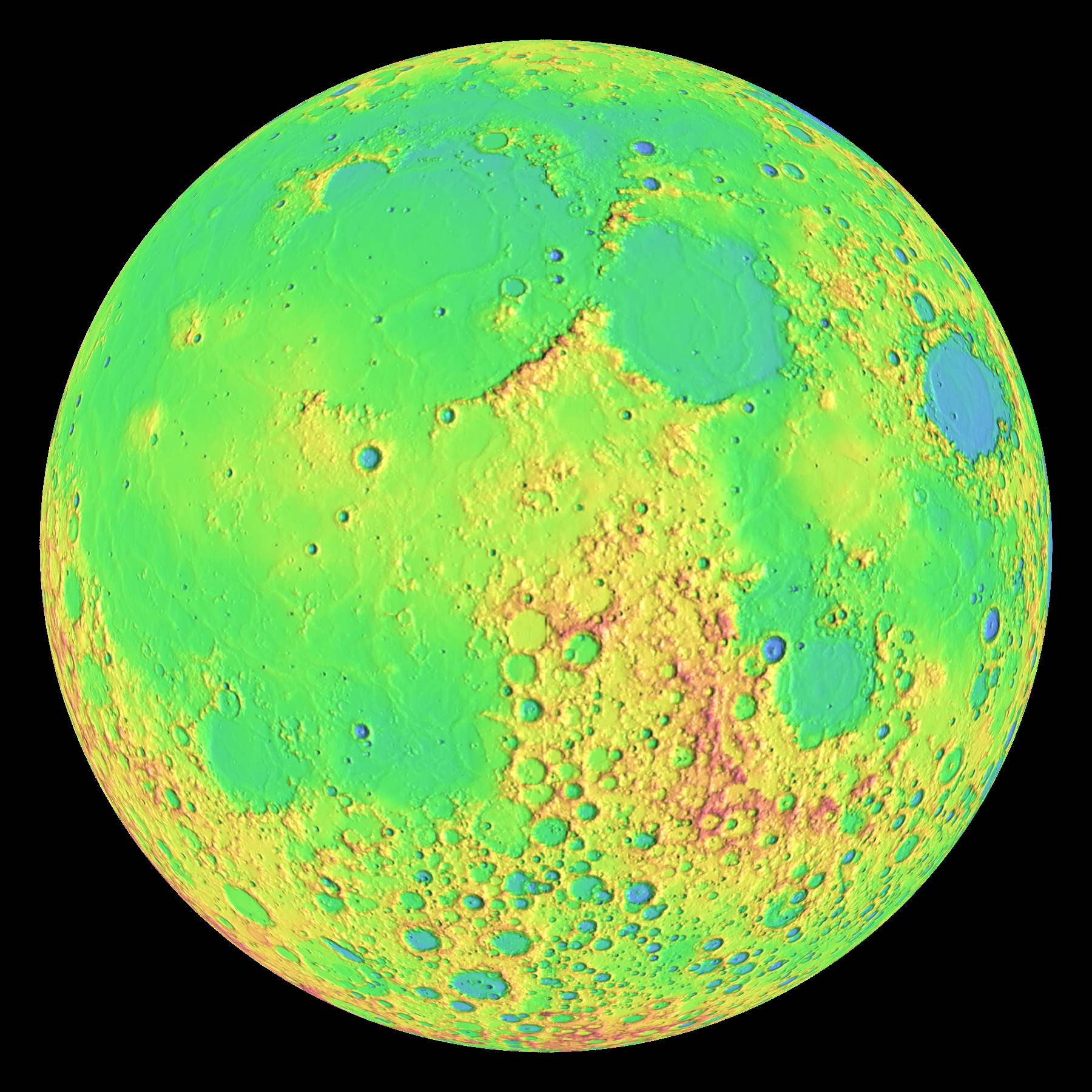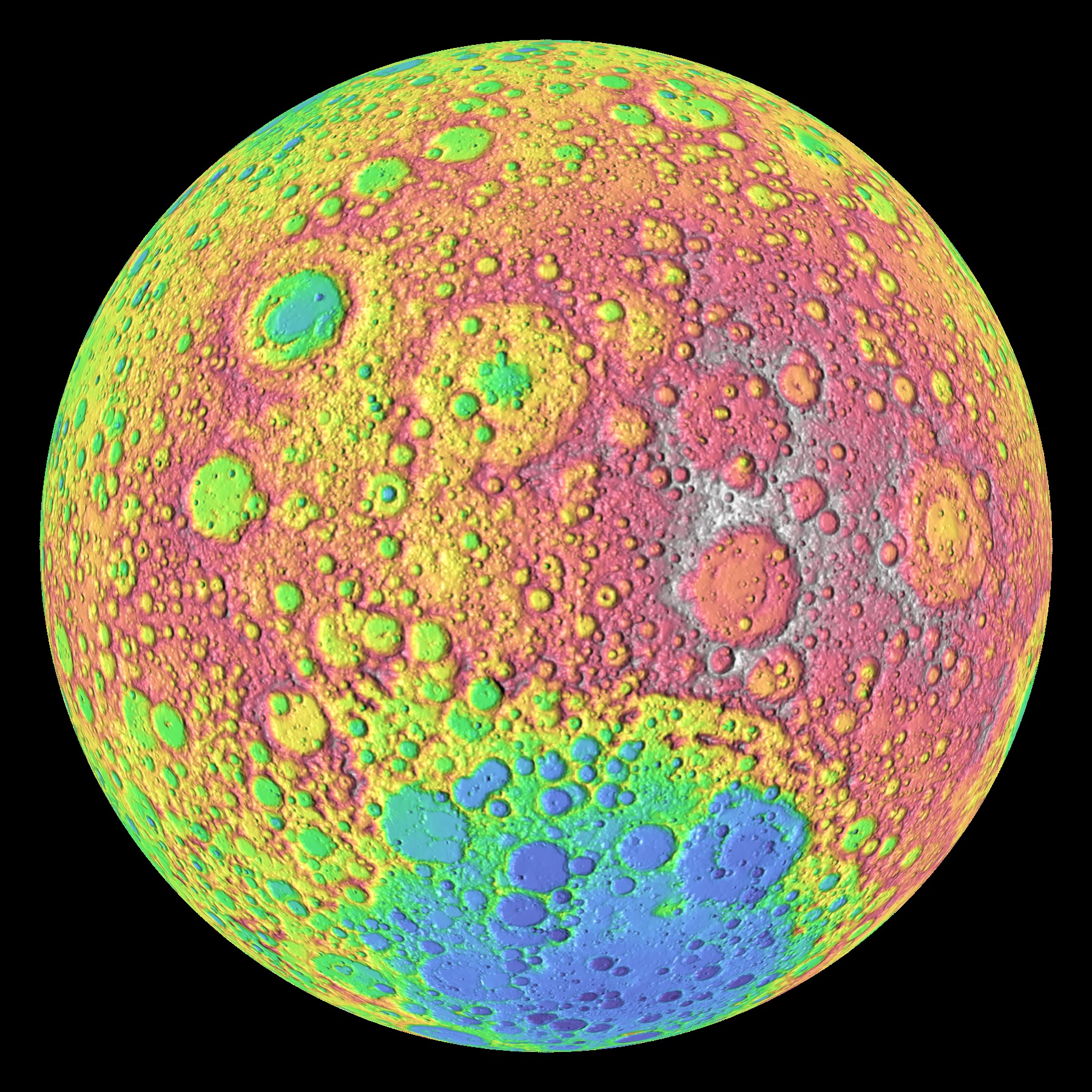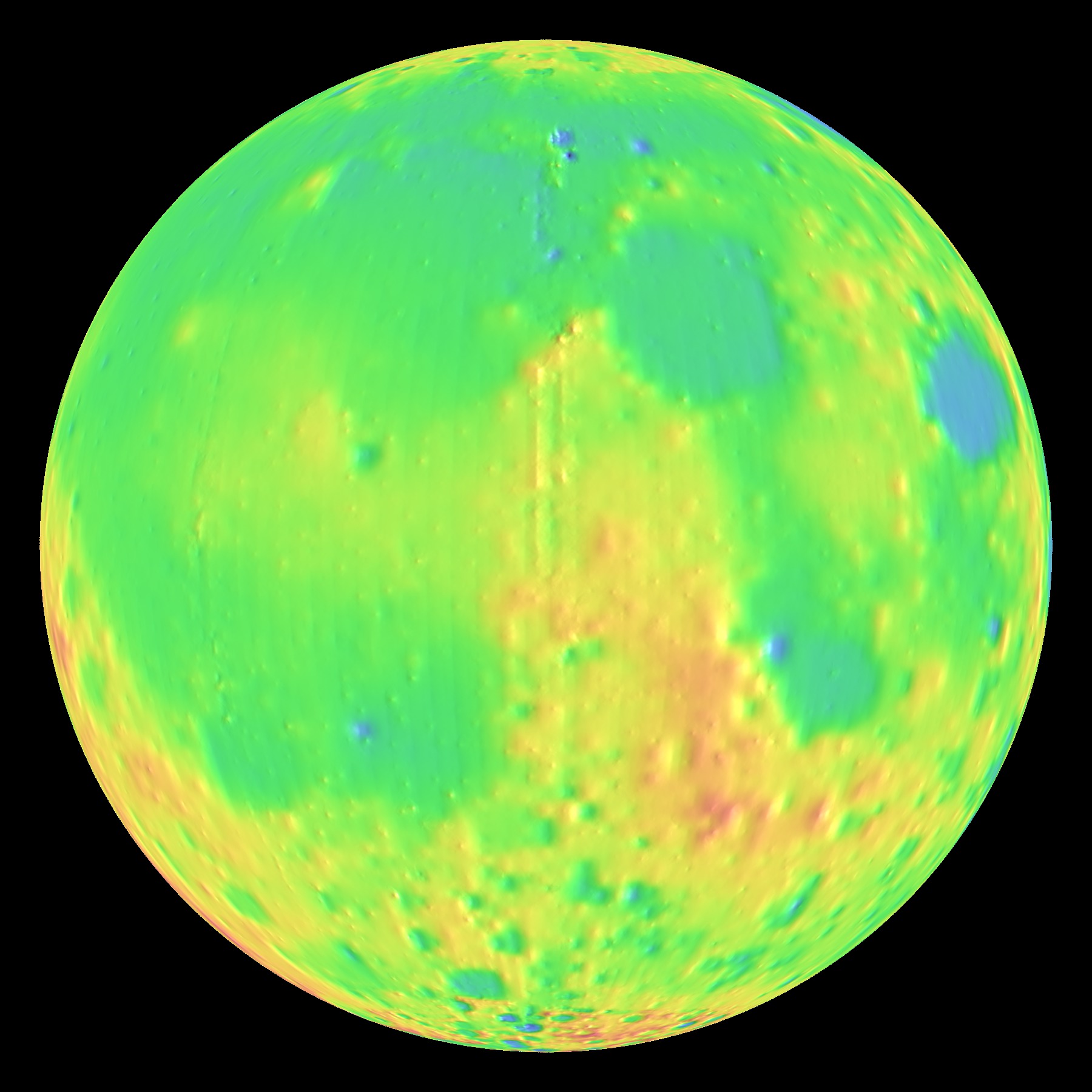Planets and Moons
ID: 3730
This animation illustrates the dramatic improvement in our knowledge of the Moon's terrain made possible by the Lunar Orbiter Laser Altimeter (LOLA) instrument onboard the Lunar Reconnaissance Orbiter (LRO) spacecraft. A LOLA digital elevation map compiled in late 2009 is compared to the Unified Lunar Control Network (ULCN) 2005, a painstakingly constructed map based on the best available data at the time, including imagery from the Clementine, Apollo, Mariner 10, and Galileo missions as well as Earth-based observations.





Lunar Topography: ULCN versus LOLA
The height of the terrain is color-coded, with blues and greens representing low altitudes and reds representing high altitudes. The LOLA data used to create this media is available to the public in the LOLA archive of the PDS Geosciences node.





Visualization Credits
Ernie Wright (UMBC): Lead Animator
Andrew Freeberg (NASA/GSFC): Producer
John Keller (NASA/GSFC): Scientist
Andrew Freeberg (NASA/GSFC): Producer
John Keller (NASA/GSFC): Scientist
Please give credit for this item to:
NASA/Goddard Space Flight Center Scientific Visualization Studio
NASA/Goddard Space Flight Center Scientific Visualization Studio
Short URL to share this page:
https://svs.gsfc.nasa.gov/3730
Mission:
LRO (Lunar Reconnaissance Orbiter)
Data Used:
Note: While we identify the data sets used in these visualizations, we do not store any further details nor the data sets themselves on our site.
This item is part of these series:
The Moon
LRO - Animations
Keywords:
SVS >> Elevation data
SVS >> False Color
SVS >> HDTV
SVS >> Moon
SVS >> LRO
SVS >> Lunar Reconnaissance Orbiter
SVS >> LOLA
SVS >> For Educators
SVS >> Solar System >> Moon >> Lunar Surface
SVS >> Solar System >> Moon >> Craters
NASA Science >> Planets and Moons
https://svs.gsfc.nasa.gov/3730
Mission:
LRO (Lunar Reconnaissance Orbiter)
Data Used:
LRO/LOLA/Digital Elevation Map also referred to as: DEM
2009-07-13 to 2009-12-17Unified Lunar Control Network 2005 also referred to as: ULCN 2005
Data Compilation - USGS - 1970 to 2005
The ULCN 2005 (Unified Lunar Control Network 2005) is a lunar control point network that precisely measured 272,931 pieces of data produced by the USGS using existing lunar imagery or data from the Clementine and other observations.
This item is part of these series:
The Moon
LRO - Animations
Keywords:
SVS >> Elevation data
SVS >> False Color
SVS >> HDTV
SVS >> Moon
SVS >> LRO
SVS >> Lunar Reconnaissance Orbiter
SVS >> LOLA
SVS >> For Educators
SVS >> Solar System >> Moon >> Lunar Surface
SVS >> Solar System >> Moon >> Craters
NASA Science >> Planets and Moons











